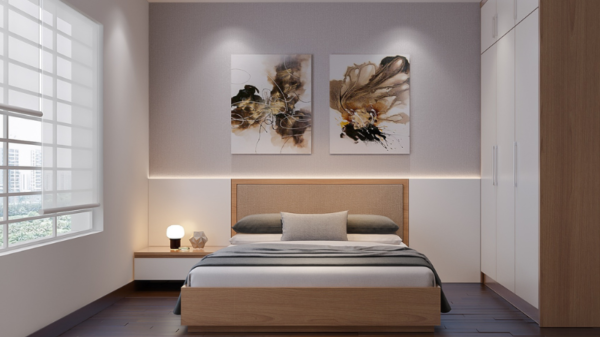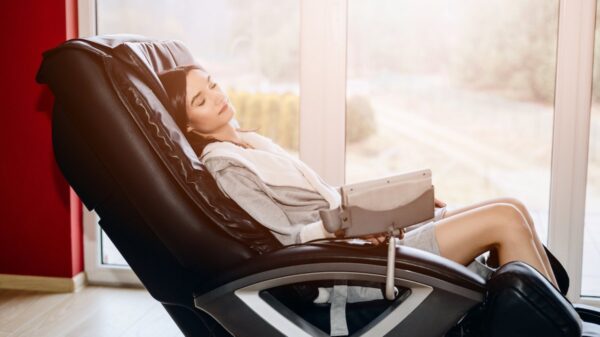Things to Know About Remote-Controlled Adjustable Office Furniture
The modern workplace is evolving at a remarkable pace, and one of the exciting innovations transforming the traditional office setting is remote-controlled adjustable office furniture.
As businesses adapt to the demands of the digital age and the ever-changing needs of their employees, the concept of adjustable office furniture has gained popularity.
In this article, we will delve into the pros and cons of remote-controlled adjustable office furniture, shedding light on how it can enhance your workspace or present challenges you need to consider.
Advantages of Remote-Controlled Adjustable Office Furniture
In the ever-evolving landscape of modern workplaces, remote-controlled adjustable office furniture has emerged as a revolutionary solution. This section delves deeper into the advantages of incorporating such furniture into your office space.
Enhanced Ergonomics
Ergonomics, the science of designing workspaces and tools to fit the human body, plays a pivotal role in ensuring employee well-being. Remote-controlled adjustable office furniture excels in this aspect.
With a simple push of a button, employees can customize the height and position of their desks and chairs. This adaptability ensures that the furniture aligns perfectly with individual body types and comfort preferences.
In a traditional office setup, employees often find themselves stuck in static positions, which can lead to discomfort and musculoskeletal disorders over time. Remote-controlled furniture mitigates this risk by allowing users to switch between sitting and standing positions effortlessly.
This dynamic approach to ergonomics not only reduces the chances of discomfort but also fosters overall well-being. Employees can vary their posture throughout the day, alleviating the stress placed on specific muscle groups and joints.

Increased Productivity
Remote-controlled adjustable office furniture is not just about comfort; it’s a catalyst for productivity. Prolonged sitting can lead to lethargy and reduced engagement during work hours. However, with the flexibility to switch between sitting and standing, employees remain more alert and engaged throughout the day.
Standing, even for brief periods, stimulates blood flow and oxygenation in the body, which can enhance cognitive function and creativity. This boost in mental agility can translate into increased productivity and better problem-solving skills.
As employees feel more comfortable and engaged, they are likely to accomplish tasks more efficiently.
Space Efficiency
In today’s world, office space is often at a premium. This is where the space efficiency of remote-controlled adjustable office furniture becomes a game-changer. These pieces are ingeniously designed to maximize space utilization.
Their compact form allows for efficient placement within the office, making them equally suitable for both small startups and expansive corporate settings.
The ability to adapt and rearrange workspaces quickly is invaluable, especially in dynamic work environments where teams may need to collaborate frequently or where office layouts need to evolve. Remote-controlled furniture can be easily reconfigured to accommodate changing needs, optimizing the use of available space.
Customization Options
No two offices are identical, and the aesthetics of your workspace matter. Remote-controlled adjustable office furniture recognizes this need for individuality. It comes in a diverse range of styles and designs, ensuring that you can find pieces that seamlessly blend with your office’s visual identity.
Moreover, the capability to customize height and layout adds another layer of personalization. Employees can tailor their workspace to their liking, creating an environment that resonates with them.
This level of customization fosters a sense of ownership over one’s workspace, which can significantly boost employee morale and job satisfaction.
Health Benefits
The health benefits of incorporating remote-controlled adjustable office furniture are substantial. Standing for portions of the workday can lead to a myriad of positive outcomes.
It promotes improved blood circulation, which can reduce the risk of conditions related to prolonged sitting, such as deep vein thrombosis (DVT). Furthermore, it helps prevent weight gain and reduces the risk of obesity, a growing concern in sedentary work environments.
Additionally, standing encourages employees to move around, reducing the tendency to remain glued to their chairs for extended periods. This increased mobility can combat the health risks associated with a sedentary lifestyle.

Employee Satisfaction
Finally, employee satisfaction is a cornerstone of a successful and harmonious workplace. Happy employees are not only more productive but also more committed to their roles. The provision of remote-controlled adjustable office furniture sends a clear message to your workforce: you prioritize their comfort and well-being.
This demonstration of care can lead to increased loyalty and reduced turnover rates. When employees feel valued and comfortable in their workspace, they are more likely to stay with the company for the long haul. This stability can have a positive impact on company culture and overall success.
Disadvantages of Remote-Controlled Adjustable Office Furniture
While remote-controlled adjustable office furniture offers numerous benefits, it’s essential to consider potential drawbacks before implementing it in your workplace. This section explores the disadvantages associated with this innovative furniture solution.
Initial Cost
The primary disadvantage of remote-controlled adjustable office furniture is the initial cost. Investing in this technology can be expensive, and the premium price is often a significant deterrent for businesses, especially smaller ones. The advanced mechanisms and technology required for these pieces contribute to their higher price tag.
However, it’s crucial to recognize that this cost should be viewed as a long-term investment. Over time, the ergonomic advantages and improved productivity can outweigh the initial expenditure. Businesses need to assess their budget and long-term goals to determine if the expense is justifiable.
Technical Issues
Like any technological product, remote-controlled furniture is not immune to technical glitches. A malfunctioning desk or chair can disrupt an employee’s workday and lead to frustration. These issues can include problems with height adjustment, power supply, or connectivity.
To mitigate such problems, regular maintenance and access to tech support are essential. Businesses should have a contingency plan in place to address technical issues promptly. This may include having spare furniture on hand or providing backup workstations if a malfunction occurs.
Learning Curve
Transitioning to remote-controlled furniture can be challenging for employees, particularly those accustomed to traditional office setups. There is a learning curve associated with operating these pieces, which may not be embraced immediately by all staff members.
To facilitate a smooth transition, it’s crucial to provide training and support. Employees should receive comprehensive instructions on how to use the furniture effectively. Additionally, ongoing support and troubleshooting resources should be readily available to address any questions or concerns.
Limited Mobility
While remote-controlled furniture excels within a fixed office space, it may not be as suitable for employees who require mobility or frequently work from different locations. These pieces are designed to stay in one place, making them less versatile for individuals who need a more flexible workspace.
For mobile employees or those who frequently work remotely, alternative solutions may be necessary. Portable ergonomic accessories or flexible workspace arrangements may be more suitable to meet their needs.
Energy Consumption
Remote-controlled furniture relies on electricity to function. While the energy consumption is relatively low compared to many other office appliances, it’s still a consideration, especially for environmentally conscious companies aiming to reduce their carbon footprint.
Businesses should evaluate the energy efficiency of these products and explore ways to minimize their environmental impact. This may include using energy-efficient components or implementing policies to power down furniture when not in use.
Compatibility
Ensuring that all employees have access to remote-controlled furniture can be challenging in larger organizations. Not all workstations may be suitable for this type of furniture, and retrofitting existing setups could be logistically complex.
Moreover, some employees may require additional adaptations or accommodations to make remote-controlled furniture accessible to them. For example, individuals with disabilities may need specialized features or ergonomic assessments to ensure their needs are met.

In Conclusion
Remote-controlled adjustable office furniture offers a range of benefits, from improved ergonomics to enhanced productivity and employee satisfaction. However, it’s crucial to weigh these advantages against potential drawbacks, such as initial costs and technical issues.
By carefully considering your office’s needs and investing in proper training and maintenance, you can make an informed decision about whether remote-controlled adjustable office furniture is the right choice for your workplace.






















